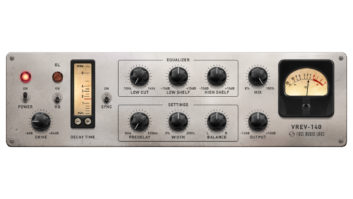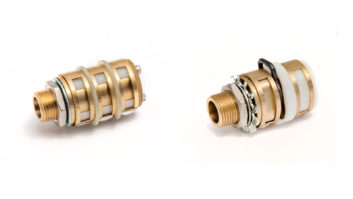
Fuse Audio Labs, a plug-in maker out of Dusseldorf, Germany, recently released the VREV-140 ($59, Mac/Windows), a plug-in emulation of the classic EMT-140 plate reverb. Although there are many excellent EMT-140-style plug-ins on the market, the VREV-140 should be competitive due to its winning combination of authentic sound quality, useful extra features and excellent value. The only user-adjustable parameters on the original EMT-140 were the decay time and the cut amount on a filter set at 80 Hz. While no plug-in will sound as rich as the original, digital versions do provide significantly more control.
Plug-in emulations are also capable of performance that would be physically impossible or impractical on a hardware plate reverb. The electromechanical EMT-140 required a large footprint—8 feet by 4 feet, and weighing 600 pounds—to create its max decay time of 5 seconds. Conversely, the VREV-140 offers up to 32 seconds of decay and takes up precisely zero physical space in your studio.
Parameters on the VREV-140 are plentiful. You get a Power (bypass) switch, a Drive control that governs an onboard saturation circuit, an HQ (high-quality) switch that turns on an anti-aliasing process in the amplification stage, and an overload light that lets you know when you’ve turned the Drive control high enough to start saturating the signal.
The Decay-time adjustment looks and functions like the one on the hardware, with buttons for increase and decrease. The Sync switch locks the Predelay control to the host tempo, allowing for tempo-based settings. The EQ section consists of three different filters. One is a Low-Cut filter with a 12 dB/octave roll-off adjustable from 10 Hz to 1 kHz. The other two are Low- and High- Shelf, Baxandall-style filters with 15 dB of boost or cut at 150 Hz and 5 kHz, respectively.
Next to the Predelay knob are controls for stereo Width and Balance (on stereo instances only). The former controls the width at the stereo output and ranges from 0 (mono) to 200 percent, with a default of 100 percent. The Balance knob enables you to compensate for the left or right level at the output.
Fuse Audio Labs VREV-140 Reverb Plug-In Launches
All the parameter knobs on the plug-in give you a text readout during adjustment, which is helpful for creating precise settings. In addition to Mix and Output controls, you get a Lock button at the bottom right. Clicking it locks the Mix knob at its current setting, allowing you to change presets without affecting the wet/ dry balance. The far right of the GUI includes a VU-style meter that you can set to show input or output.
I tried the VREV-140 on a couple of mixes, and it shined on every source I processed, including guitars, vocals, drums and percussion. I compared it to a couple of significantly-more-expensive EMT-140- style plug-ins, and though its tone might be a tad less lush, it still sounds excellent.
It was a nice bonus to have the Drive circuit. When using the VREV-140 as a send effect, I could add saturation to the reverb signal while leaving the source clean. As an insert, I was able to overdrive both the reverb and the source. Turning the Mix control down to 0 turned the plug-in into a saturation processor capable of everything from subtle overdrive to heavily crushed sounds Having the 32-second maximum decay time was great for sound design. At one point, I opened up a plucked-sounding synth patch with the VREV-140 set to its max decay, and just hitting one note created an epic-sounding effect.
Despite its realistic emulation and versatile feature set, the VREV-140 is one of the least expensive EMT-140 emulations on the market, and it is definitely worth checking out.







